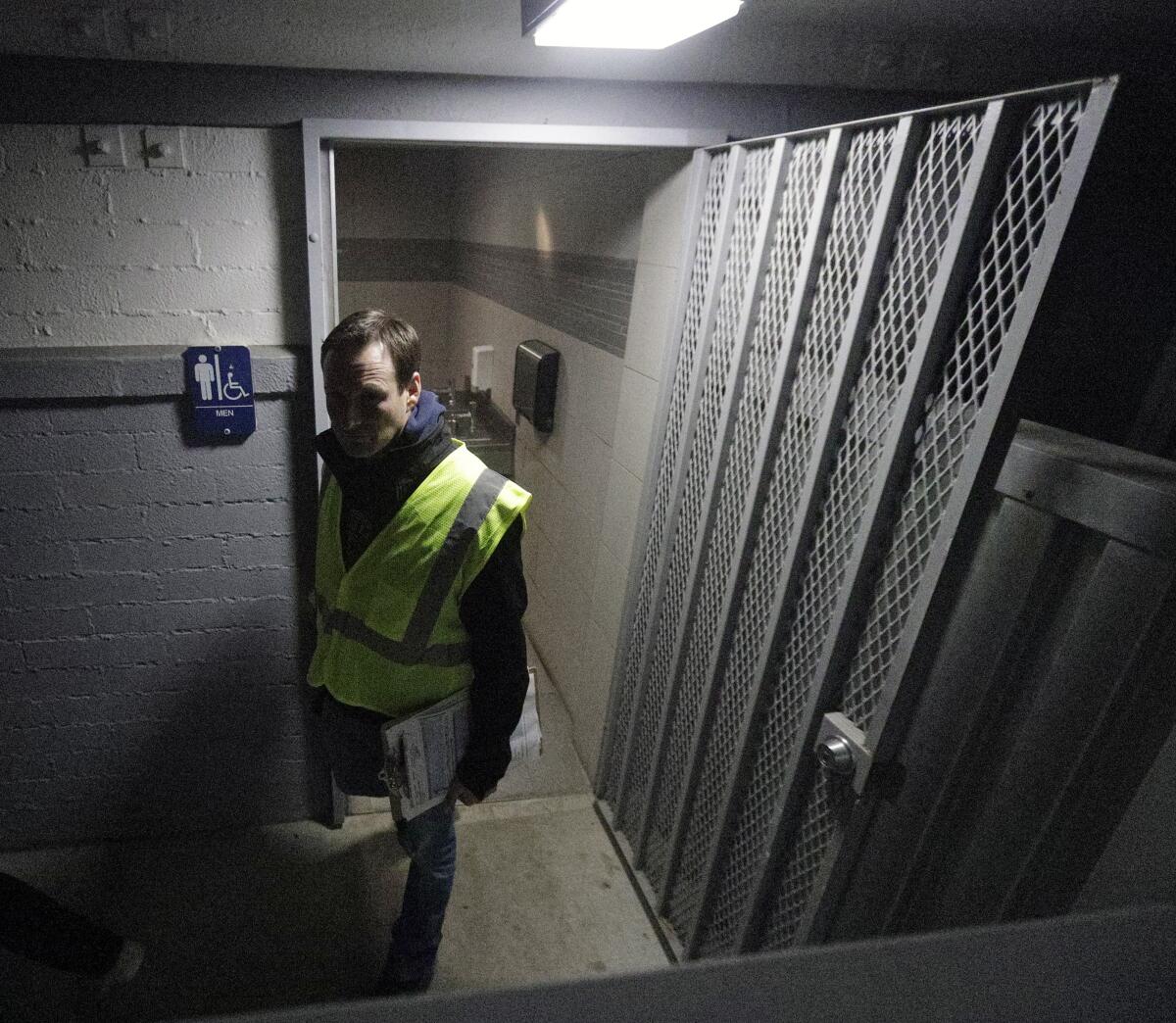Volunteers fan out across Burbank to track the city’s homeless population

Josh Fryday and Josh Lord wound their way through the hills of Burbank by car on Tuesday with a mission: to count the city’s homeless population.
The men were just two of the 50 volunteers who fanned out across the city as part of the Greater Los Angeles Homeless Count, an annual three-day effort coordinated by the Los Angeles Homeless Services Authority to document the county’s homeless population.
Last year’s count saw 58,936 homeless people living in Los Angeles County, a 12% jump from the 52,765 documented in 2018.
Burbank saw its own homeless population dramatically increase by around 40%, increasing from 203 people in 2018 to 286 people last year.
Both Fryday and Lord had come down to Burbank from Gov. Gavin Newsom’s office to join the tally and get an on-the-ground look at the county’s efforts to confront homelessness.
“Dealing with the homeless crisis in California is one of the governor’s top priorities,” said Fryday, who works as California’s chief service officer.
“And one of the most impactful things to do is to take part in these point-in-time counts of the homeless population,” he added.
After driving up and down neighborhoods for several hours and scouring Brace Canyon Park, Fryday and Lord came up empty in finding anyone to count.
That’s not to say there weren’t homeless people in other parts of the city.

The results of the count won’t be known until sometime in late May or early June.
The numbers will let officials know not just if homelessness has worsened in the county over the past year but what kind of social services and programs will be needed to help get people off the streets.
Marcos Gonzalez, housing development manager for the city’s community development department, said a majority of homeless people in the area are locals, either to Burbank or the county, with only a sliver coming from out of state.
He said the city tries to reunify some of the out-of-state people with their families and added that one of the city’s main focuses has been moving its unsheltered homeless population into interim housing.
“We have been able to provide housing and services through Measure H and through our own application for housing vouchers,” he said. “This may have contributed to some of the numbers or lack of them we’ve been experiencing tonight.”
Measure H is a countywide quarter-cent sales tax approved by voters in 2017 and projected to raise roughly $355 million annually over a 10-year period for homeless programs. In 2018, the city received about $77,000 from the measure.

Burbank has its own three-year homeless plan, outlining the different short- and long-term solutions the city can implement to deal with homelessness.
One change the city is eyeing in terms of housing is establishing some kind of shelter program. Gonzalez said officials previously attempted to bring in a winter-shelter program around 2010, but they were unsuccessful.
“We’re looking at doing something where it’s not just a winter shelter but a year-round program,” he said.
Although the desire for sheltering the homeless exists in Burbank, Gonzalez said the biggest hurdles the city faces are financing the project and the developing the political will to get it accomplished, “not just from our elected officials but also the community.”
Gonzalez said because the city does not receive direct funding allocations to build many of the necessary homeless programs and services, it has to compete with other municipalities for funding.
However, simply moving homeless people into housing isn’t going to solve the problem and won’t be easy even if funding became available.
Kiara Banks, director of programs at the homeless services organization Ascencia, said the homeless person needs to have the desire to move off the streets.
Because a lot of the population has been chronically homeless for years, some people might not be necessarily ready to transition and wouldn’t “even know what the normalcy of living in a house or apartment is like,” according to Banks.
“We don’t want to press on them that they have an issue and need to fix it right now,” she said. “We do it at their own pace so that they can have the dignity of making that decision themselves when they’re ready.”
